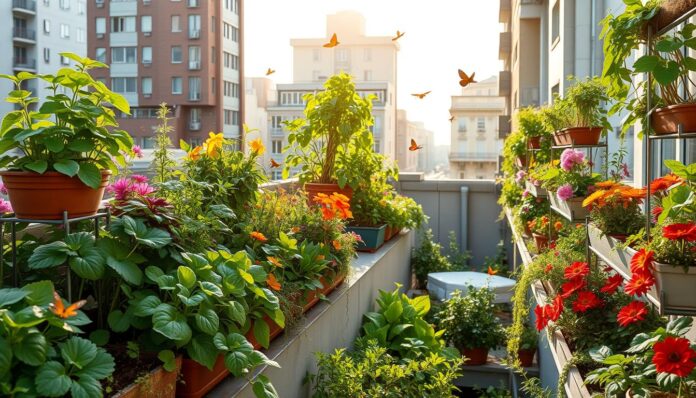Urban gardening is becoming more popular as cities grow. It’s changing cityscapes in many ways. It brings fresh food, community, and care for the environment.
i will show you the good things about urban gardening. We’ll talk about different types of gardens, why they’re getting more attention, and new ways to farm in cities. If you live in the city and want to garden, or if you’re making plans for your community, this article is for you.
Understanding Urban Gardening and Its Growing Popularity
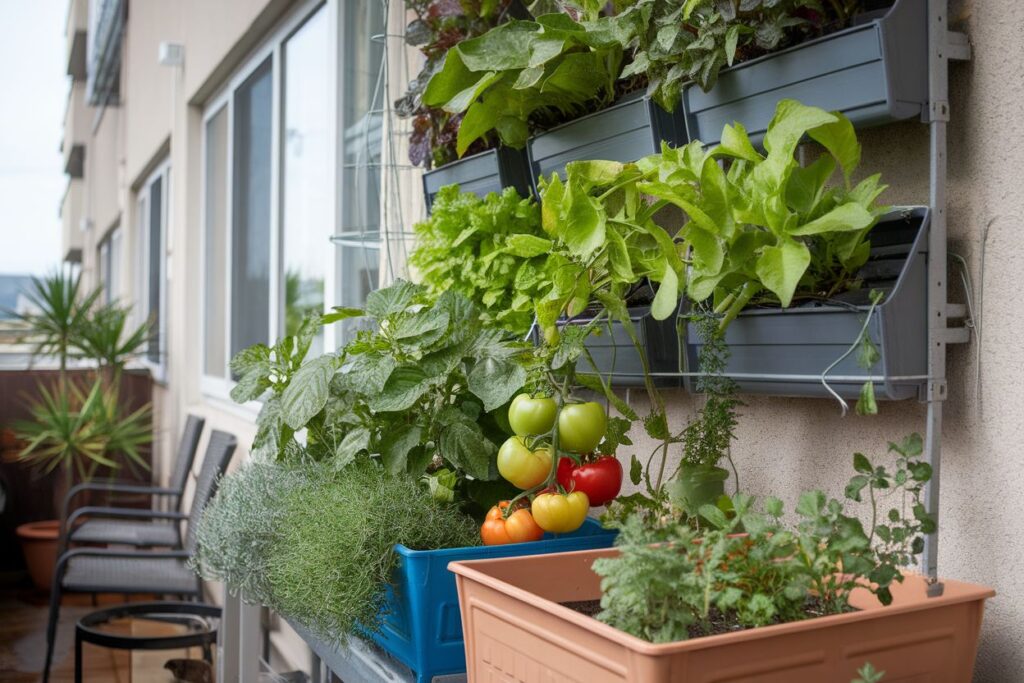
Urban gardening is becoming more popular in cities. People are finding creative ways to grow food in small spaces. This includes using containers on balconies and vertical farming.
It shows a desire to connect with nature and get fresh food. It also helps build community in crowded areas.
Urban gardens vary to fit city life. Container gardening is great for small spaces like balconies. Vertical gardening uses walls to grow plants, saving space.
Community allotments let groups share land. This way, many people can garden together.
More people want fresh, local food. They also care about the environment and enjoy gardening. Cities are now creating spaces for urban farming.
They have community gardens and programs to help. This supports growing your own food in the city.
New tech and designs are changing urban gardening. Hydroponics and aquaponics grow plants in water. This works in very small spaces.
These methods are efficient and show how to grow food in cities. They’re key to sustainable food production in urban areas.
Health Benefits of Growing Your Own Food in Cities
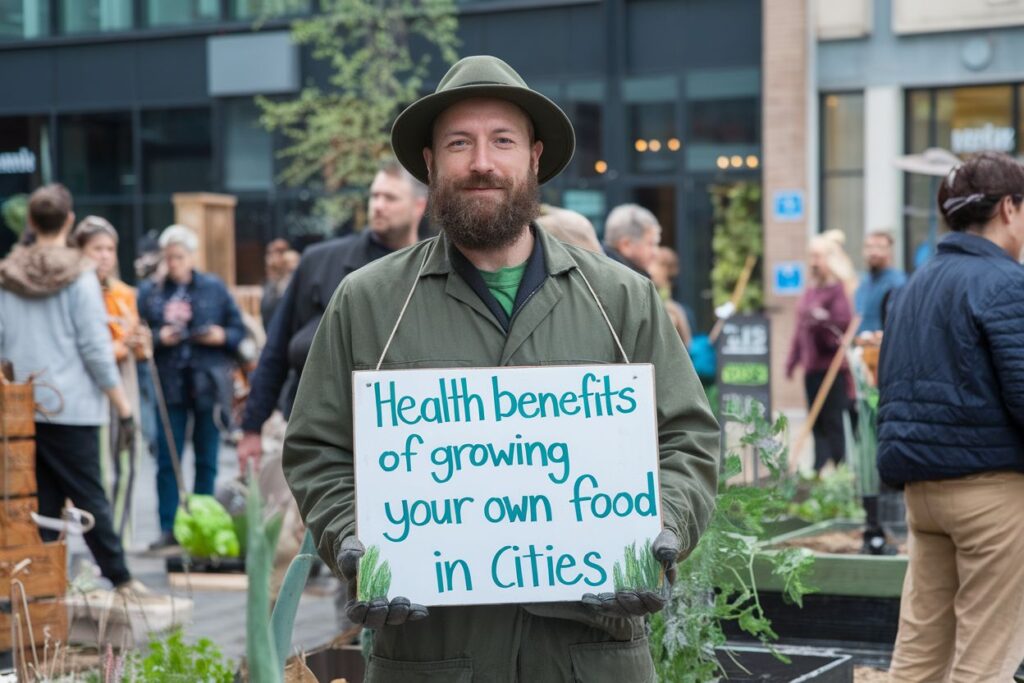
Urban gardening brings many health benefits to city folks. It lets people grow their own organic food. This way, they get fresh, nutritious food that boosts their health.
Gardening also gets you moving. It’s a great way to stay active. This helps your heart and muscles stay strong.
But there’s more. Gardening is good for your mind too. Caring for plants and watching them grow can calm you down. It helps reduce stress and anxiety.
Gardening also makes you more mindful. It connects you with nature. This can improve your mental health and brain function.
Plus, gardening helps you eat better. Growing different fruits, veggies, and herbs means you get more nutrients. This can make you healthier and lower your risk of diseases.
“Gardening is a healthy hobby that combines physical activity, mental relaxation, and the joy of watching something grow. It’s a powerful way for urban dwellers to reconnect with nature and improve their well-being.”
In short, growing your own food in cities has many benefits. It’s not just about getting organic produce. It also boosts your physical and mental health. Gardening is a great way for city folks to live better lives.
Environmental Impact and Sustainability Advantages
Urban gardens are key to fighting climate change and boosting environmental health. They help cool cities by reducing the urban heat island effect. This effect happens when cities get hotter than the countryside.
By cooling cities, these gardens cut down on the need for air conditioning. This saves energy and helps the environment.
Urban gardens also help lower carbon emissions. Growing food close to home means less need for long trips. This cuts down on greenhouse gases.
The plants in these gardens soak up carbon dioxide. This helps clean the air and supports a greener city.
Urban gardens bring in many plants and attract pollinators. This boosts local biodiversity and makes cities stronger. They offer homes for birds, insects, and small animals.
These creatures are vital for a healthy city. They keep the ecosystem balanced.
Urban gardens also save water. They use smart irrigation like rainwater harvesting and drip systems. This cuts down on water waste.
It helps cities use water more wisely. This is especially important in areas where water is scarce.
By focusing on urban gardening, cities can move towards a greener future. They create spaces that improve the climate, support wildlife, and manage resources better.
Economic Advantages of Urban Gardening
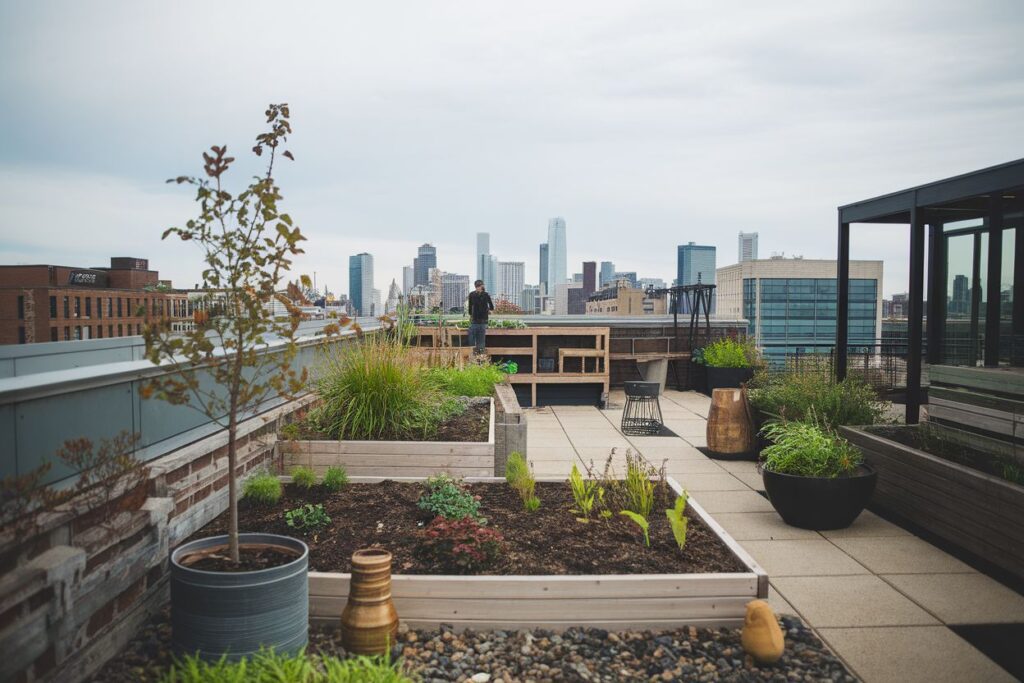
Urban gardening is a promising way to improve food security, support local economies, and save money for households. It’s changing cities in the United States, bringing financial benefits to people and communities.
One big plus of urban gardening is its effect on food security. City folks can grow their own food, making fresh, healthy meals more accessible. This reduces the need for outside food sources and helps against food supply problems. It also leads to better health and lower food costs.
Urban agriculture jobs and local gardens also boost the economy. They support small businesses and create jobs in the community. These local food systems keep money in the area, making the economy stronger and more self-sufficient.
“Urban gardening has the potential to transform local economies, creating new jobs and revitalizing underutilized urban spaces.”
Urban gardening also means savings for families. Growing their own food can cut down on grocery bills. This frees up money for other important things or investments.
As cities get into urban gardening, the economic benefits will grow. It will help with food security, support local economies, and save money for families. This innovative farming method is key to a more resilient and prosperous future.
Social and Community Benefits of City Gardens
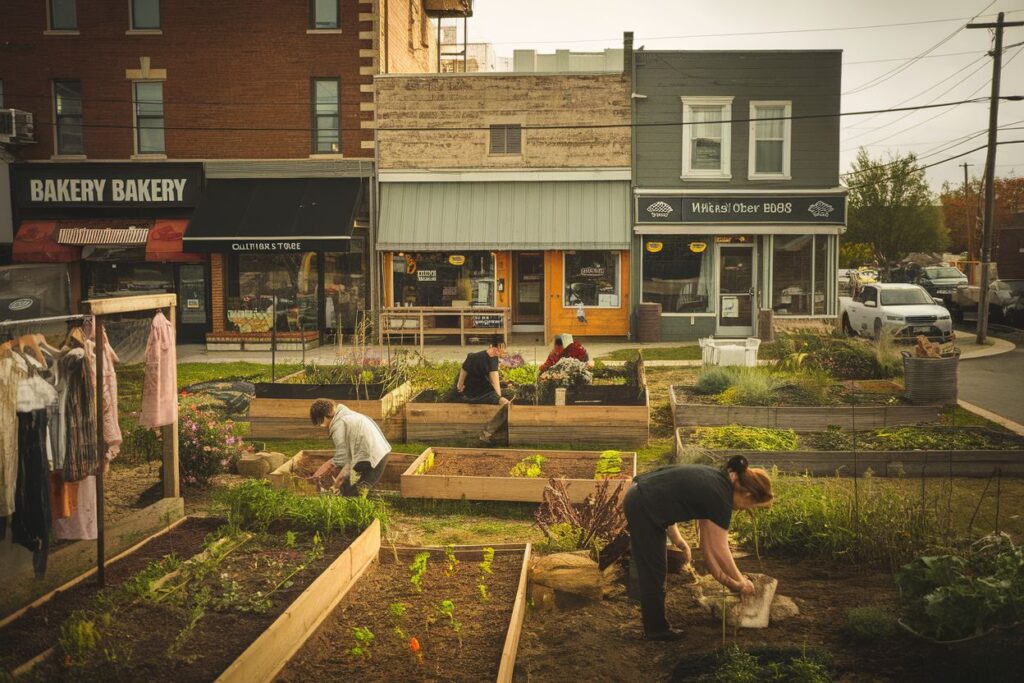
Urban gardens do more than grow food. They bring people together, creating a sense of community. These green spaces are where neighbors meet, share ideas, and celebrate their cultures.
Working in a communal garden builds friendships. People share tips, swap food, and work together. This teamwork breaks down barriers, making the community stronger.
City gardens teach kids and teens about food and the environment. They learn about growing food and eating healthy. This education helps build a stronger community.
Urban gardens show off the community’s cultural diversity. People from different backgrounds share their gardening traditions. This exchange strengthens the community and makes it more vibrant.
Final Thoughts
Urban gardening brings many benefits to cities. It makes them more sustainable, healthy, and connected. It gives people fresh, nutritious food, cuts down on carbon emissions, and brings communities together.
Urban planning and policy are key to growing sustainable cities. By creating community gardens and rooftop farms, we can tackle food security, environmental issues, and community well-being. This is crucial for the future.
The need for local, green food is growing. By letting people grow their own food, cities can become greener and healthier. This approach builds stronger, sustainable cities. The path to a greener future is clear, and urban agriculture is leading the way.


